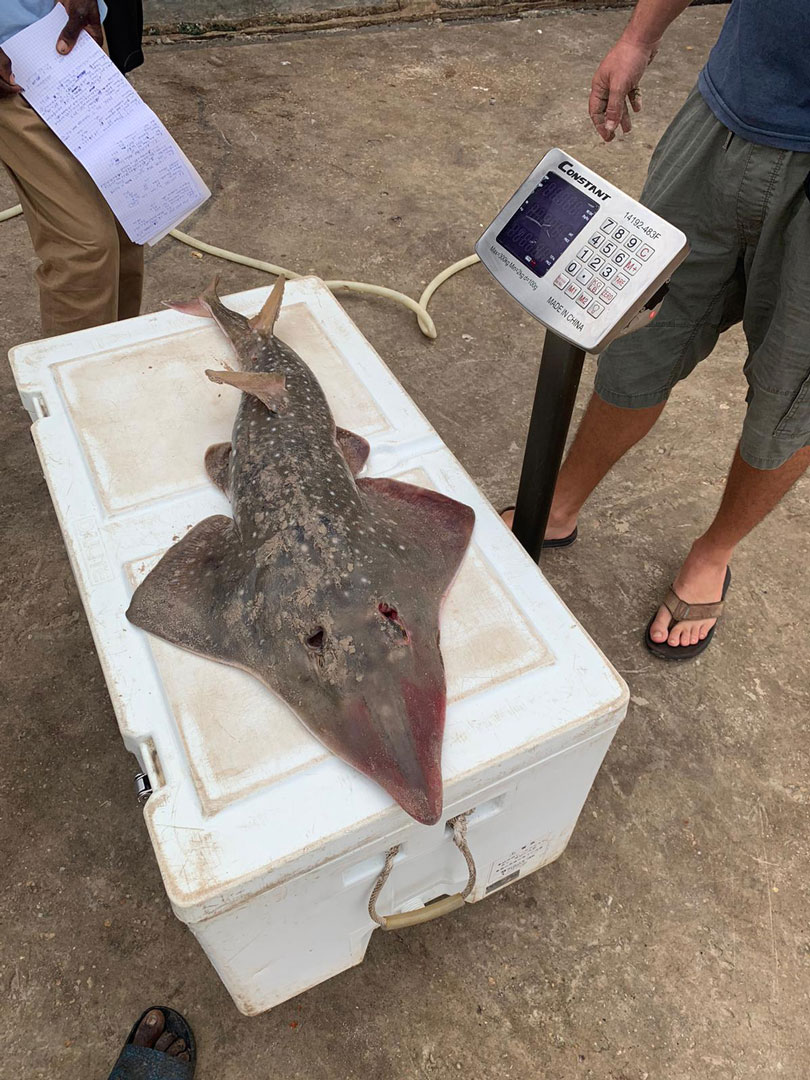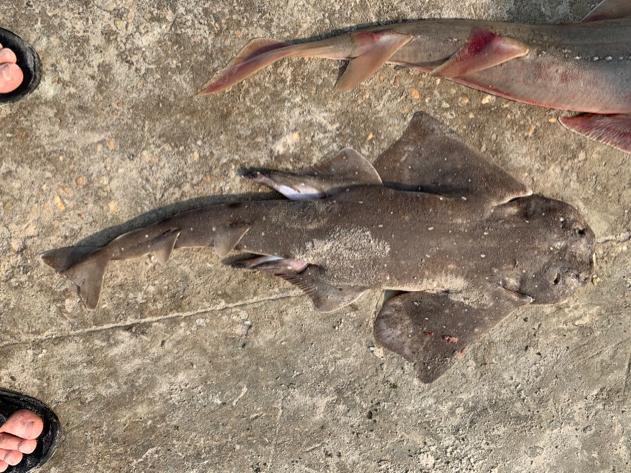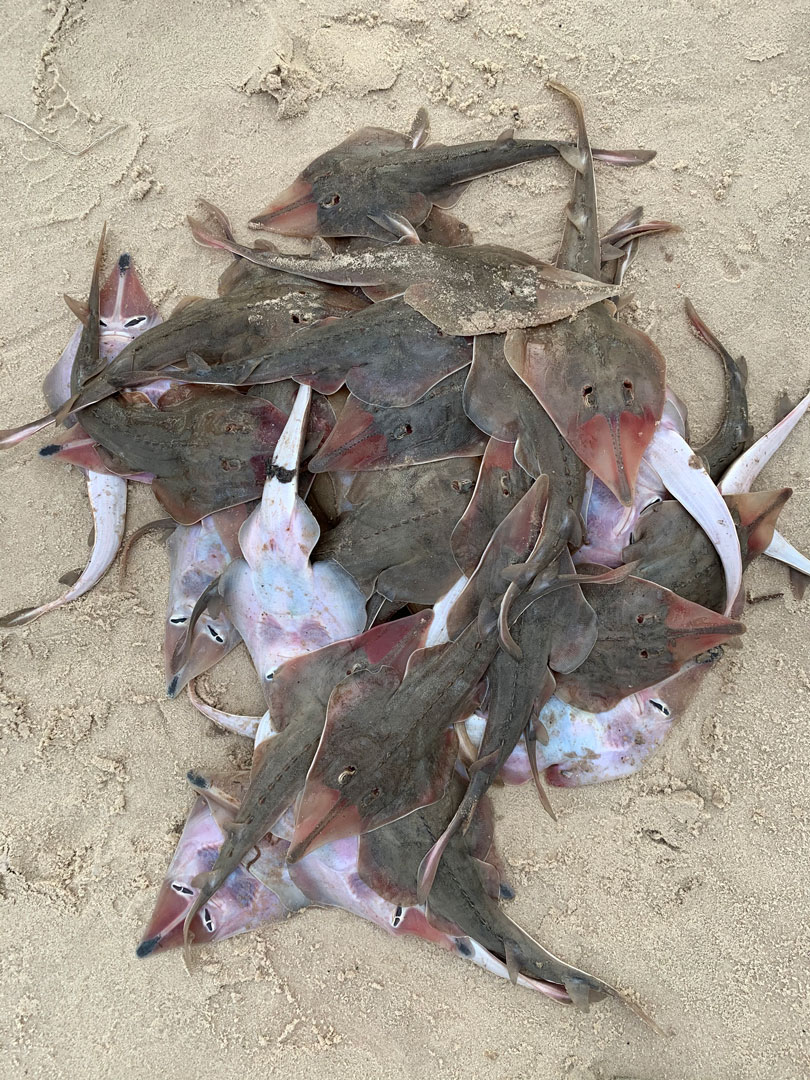Stronghold for threatened species of sharks and rays
Large-bodied, benthic, shallow-water species of chondrichthyan fishes have a higher propensity to be threatened with extinction due to susceptibility to exploitation pressure. This is certainly the case for angelsharks, wedgefishes, and guitarfishes – with many species considered to have gone extinct or have a very uncertain presence in West and Central Africa.

Critically Endangered African wedgefish (Rynchobatus luebberti) being weighed and processed at Songolo. Photo © Kristian Metcalfe.
However, hope arises from the landings survey effort at Songolo in the Republic of the Congo. Congolese research associates visit the landing site 3 or 4 times a week and have observed many of these beautiful, cryptic, and Critically Endangered species. Species such as smoothback angelsharks (Squatina oculata), African wedgefish (Rhynchobatus luebberti), white-spotted guitarfish (Rhinobatos albomaculatus), spineback guitarfish (Rhinobatos irvinei), and blackchin guitarfish (Glaucostegus cemiculus) – all Critically Endangered species are still present in Congolese waters.

Critically Endangered smoothback angelshark (Squatina oculata) landed at Songolo. Photo © Kristian Metcalfe.
The development, availability, and affordability of smartphones and digital cameras have allowed the Congolese field team always to be equipped with the tools to capture pictures of new species to be added to the database and to provide documentation of these threatened species. This allows the observations and data to be verified and shared so that these occurrences can help update assessments on species presence/absence in regions and/or range expansions currently not widely reported. All are hugely informative and important to improve knowledge of these species and underpin management decisions.

Large pile of juvenile Critically Endangered blackchin guitarfish (Glaucostegus cemiculus) ready to be sold at Songolo. Photo © Kristian Metcalfe.
A huge benefit and power of repeated, longer-term data collection is that it provides the opportunity to observe the rare and the wonderful. By systematically surveying the landing site at Songolo, we can have strong evidence that the coastal waters of the Republic of the Congo are a stronghold for many of these species and, as such, should be considered for further research to strengthen laws and the designation of protected areas for these species.
In an unlikely scenario – a bustling, chaotic, largely unregulated fishery in Central Africa, there may be hope for some of the most at-threat species of sharks and rays.
